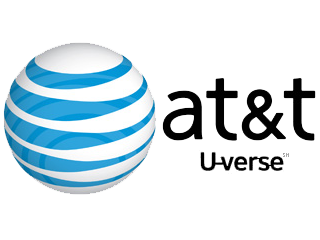 |
| This is how Droid Turbo is marketed |
 |
| This is what Droid Turbo is |
Turns out after a few days getting acquainted I find that the Droid Turbo isn't a great phone, they made a bunch of tweaks and compromises which make little sense, and the mess Verizon made of my account during the transition is astounding.
Let's talk about the positives. Droid Turbo has a great screen - high pixel density, great color, and a deeper black than the Droid Ultra. It's only slightly larger than the Ultra, but the display makes it feel more like a tablet than a phone. Battery life has been great - normally I'm hunting for a refresh charge right before dinner, but the Turbo is still above 50% and I've been on it for almost 12 hours. It feels good in my hand, and I like the forward-facing speaker. I also like their tweak of "Active Notifications" called "Moto" which shows multiple icons for notifications, where Active Notifications only showed the most recent.
My biggest complaint is with the Turbo's radios. First and foremost, Turbo does not support simultaneous Voice + Data! This is a huge problem in my eyes - apparently the phone does not have a dedicated CDMA radio for voice. According to various peer/consumer forums Verizon will issue an update in a month or so that enables Advanced Calling 1.0 aka Voice Over LTE (VoLTE) and supposedly this will bring this so-called flagship phone into 2014. It remains to be seen if the simultaneous Voice + Data will work when the phone doesn't have 4G LTE coverage, or for that matter if AC1.0 can seamlessly hand-off a call to a 3G or 2G site.
I've seen other radio oddities in the Turbo. I wear a Pebble smartwatch and the Bluetooth connection was so unstable I had to turn off "loss of connection" alerts because I was getting them constantly - even when the phone was in my pocket. GPS accuracy is notably degraded; in a side-by-side with my Ultra it's clearly off and tends to drift around.
 |
| More APs seen by another device |
 |
| Droid Turbo sees these APs |
Wi-Fi is also problematic. I did a side-by-side comparison in the 2.4 GHz band and the Droid Turbo clearly sees fewer access points. From what I can tell the Wi-Fi radio is almost 10 dB weaker on receive than other devices I tested. I did not have an opportunity to test the 5 GHz band. I will say on a positive note that Speedtest.net measurements were faster on the Droid Turbo versus the Ultra.
Looking at the GUI (aside from the aforementioned pixel density and clarity - which are great) I've found that some apps (notably Ingress) are having trouble registering screen taps. It's not that the screen or the OS is lagged - it's just that certain actions such as tapping on a portal in Ingress just don't register. I'm guessing that this may be fixable on the app development side, not the phone, but for now it's really annoying.
Turbo has a proximity/environment sensor feature which supposedly allows me to dismiss alerts/rings with a wave of my hand, however I find that it only works in ideal situations like when the display is facing up, and I'm in a well-lit room. It doesn't dismiss if the phone is mounted in my dashboard holder, or in a dark room. This wouldn't normally be a problem except that the default alert and ring are an amazingly loud and annoying musical tones - the first time I got a call was during dinner with my wife and I'd forgot to silence the ringer. I sat there waving at the Turbo like an idiot while people at other tables (and my wife) glared at me. For some reason the nearly universal trick of "tap the volume control to silence the phone" doesn't silence the alerts or the ringer.
Droid Turbo's "Command Center" widget is another disappointment. It's a neat idea: weather, time, date, and battery level all in one, with pop-out drawers for weather forecast and upcoming calendar events. Problem is that the widget is a 4x2 size so it consumes half the screen, and when the screen is off the drawers automatically retract. Given that the widget takes up 4x2 regardless of whether the drawers are extended or not, this quickly went from "neat" to "annoying" - why not just leave the drawers extended?
On the business side Verizon managed to really screw up my account while processing this upgrade. I was on a 2 GB plan with a 2 GB complimentary bump-up, and a 10% reduction on the monthly line charge. The plan I had came with a Hotspot subscription. I was assured by the corporate store rep that the upgrade would have no effect on my plan. After the upgrade I got bumped down to 2 GB, my complimentary 2 GB bump-up disappeared, my 10% reduction disappeared, and I haven't been able to get my Hotspot reactivated despite calls to both Customer and Tech Support. I've been so disappointed with the Droid Turbo that I tried to switch my service back to my Ultra - but Verizon's website states that I have a "pending order" which prevents changes to my account so I'm stuck with the Turbo for now.
I really wanted the Droid Turbo to be a great phone. I suffered through the early Motorola models like the Droid and the slightly-better Droid 2, was mostly pleased with the RAZR Maxx, and was very happy with the Droid Ultra. Droid Turbo is several steps backwards for the Motorola product line, and I think indicates that the transition to Lenovo leadership is having negative short-term effects.







